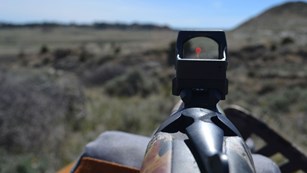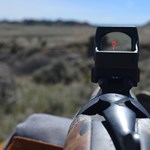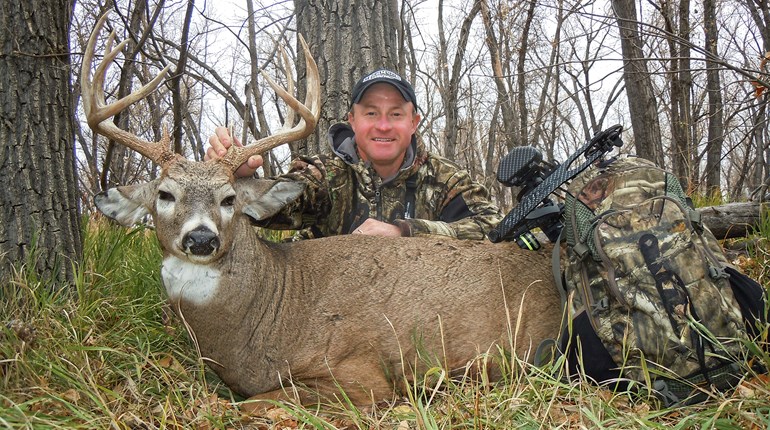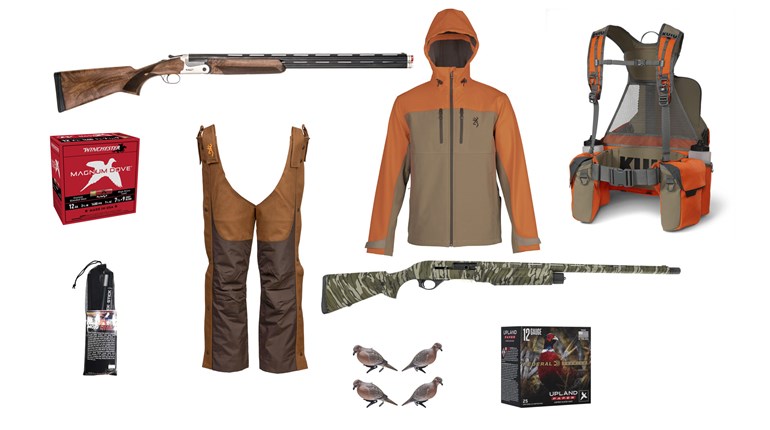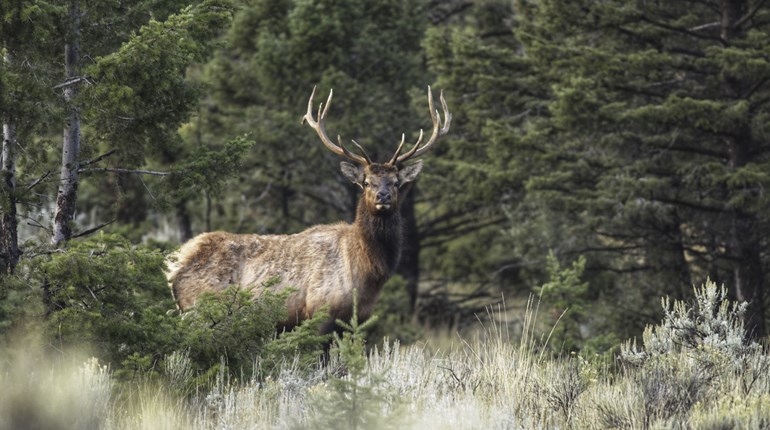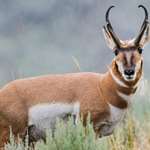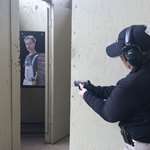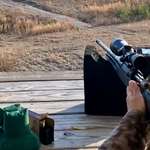As a hunter, my biggest goal is to improve the habitat and hold deer on our property. This helps reduce hunting pressure and keeps a healthy, well-balanced herd and age structure.
Although we don’t have a large amount of land, we’ve found ways to improve what we do have and create our own buck paradise, right in front of our blind locations (watch video). To do this, we have incorporated a few basic, reasonably priced items:
- Water Hole
- Rub Post
- Licking Branch
- Mock Scrape
- Trail Camera
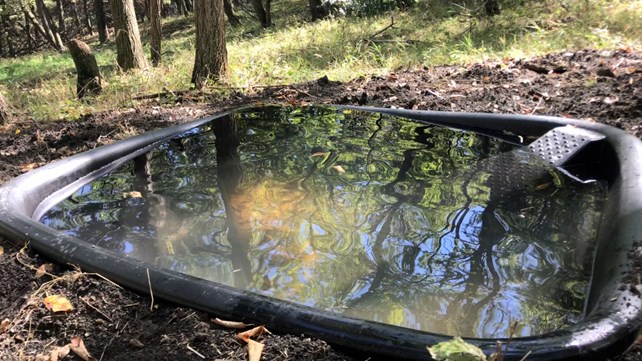
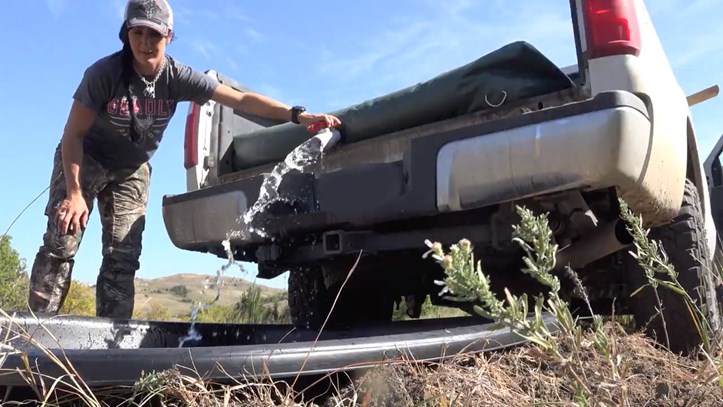
The first thing every little buck paradise needs is water. Many of our locations already contain ponds, however, by placing our water holes in the cover, we’ve found that the deer prefer to use ours. Why? The deer are all about staying hidden and not exposing themselves in the wide open.
Water holes can be any size and shape, but we usually use tanks between 100 to 150 gallons. The trick is coming up with a way to deliver water to your location. We use a big bladder called an Ivy Bag, which can be placed in the bed of a truck or UTV. For the locations we can’t drive to, we came up with an attachment that lets us run hundreds of feet of hose, which lets the water run down to our spots. If you have cattle in your area, you’ll need to install a small solar-powered electric fence, otherwise the cattle will empty your water in hours.
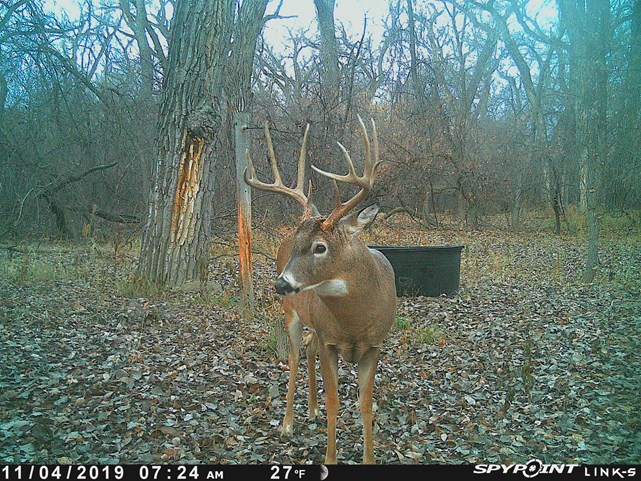
Next, we set up a cedar rub post up and, using a saw, expose some of the raw wood. First dig a hole in the ground about 18” to 24” deep, then place the post in the ground. Fill the dirt in and use a tamping post to really make it sturdy. Remember, the deer will really get after this and push with all their weight, so you don’t want it to move. Once deer start rubbing on this, be sure to leave it alone and never touch it. They’re putting their scent all over it and the more scent that is on the post the more bucks have a harder time resisting. By November there will be literally a pile of shavings under the post from the deer. Check out some SpyPoint trail camera footage here.
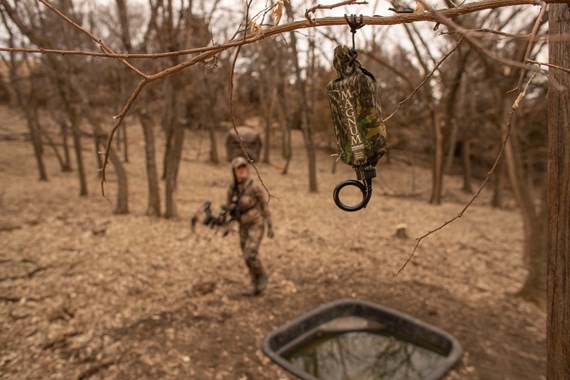
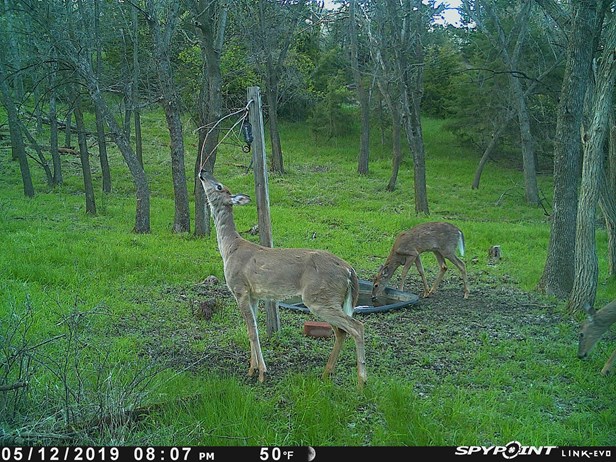
A licking branch is the next amenity in providing the bucks everything they like in one spot. Most of the cedar posts already have a hole in the top, but we use a 1 1/4” drill bit to make it a little larger. After the hole has been drilled out, find a branch that’s close to this size and cut it down. You’ll want to push it in the hole and then screw it in to ensure it doesn’t get ripped out.
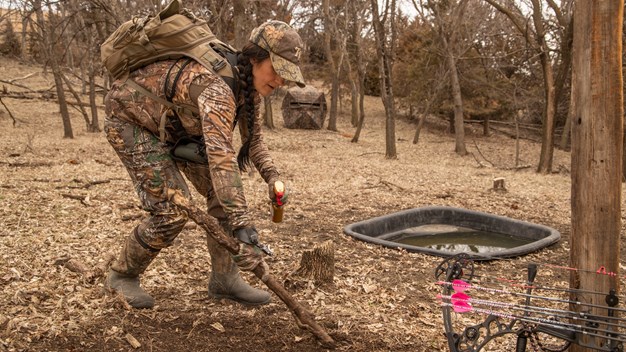
Once the licking branch has been hung, create a mock scrape underneath it to create a visual. We like to top ours off by hanging a Magnum Scrape Dripper with scent on the branch. The idea here is that it drips during daytime only, so you’re putting new scent in the scrape, which conditions the bucks to come check it out during the day.
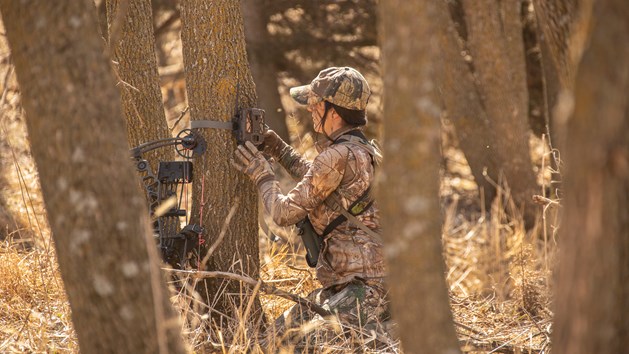
Finally, we like to place a trail camera about 6 to 8 feet from the waterhole and rub post to get the best quality photos. For the best pictures, do not position the camera directly into the sun. We also place it about hip high. If a tree isn’t available or close enough, just bring your own post for perfect placement.
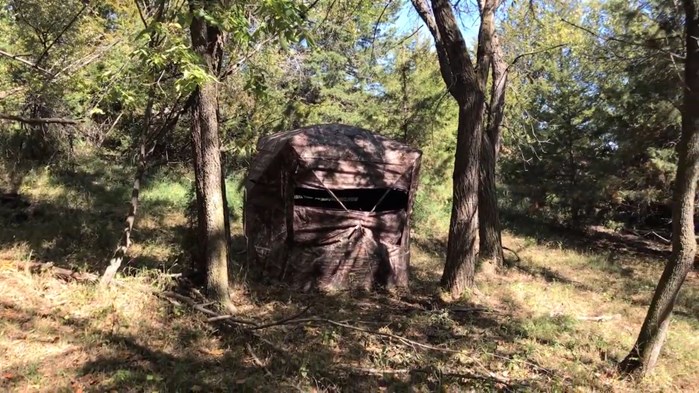
To finalize your setup, head back out about a month or so before you plan to hunt and place your ground blind or stand. We like to leave the windows open so the deer get used to the black holes of the blind. This way the deer have time to get used to the setup and learn that there is no danger associated with the blind. Also consider what your predominate winds are during the fall, and ensure your wind won’t be blowing directly at the water hole and licking branch when on stand.
About the Author: Raised by family and mentors for whom hunting and fishing were a passion and a way of life, Melissa Bachman grew up in central Minnesota, where outdoor dreams can come true. After studying television broadcasting and Spanish at St. Cloud State University, she began her career as a TV intern and then a full-time producer. With a goal of being in front of the camera, she spent every spare moment filming, editing and producing her own hunts, honing her craft and showcasing her skills. Ultimately her dreams became a reality. Today, Melissa spends more than 300 days a year in the field worldwide, filming and producing her series, “Winchester Deadly Passion,” now in its ninth season. Through her writing and videos, Melissa’s journey and commitment to the outdoors, family, the conservation of nature, and sharing has made her an ambassador for our cherished way of life.










